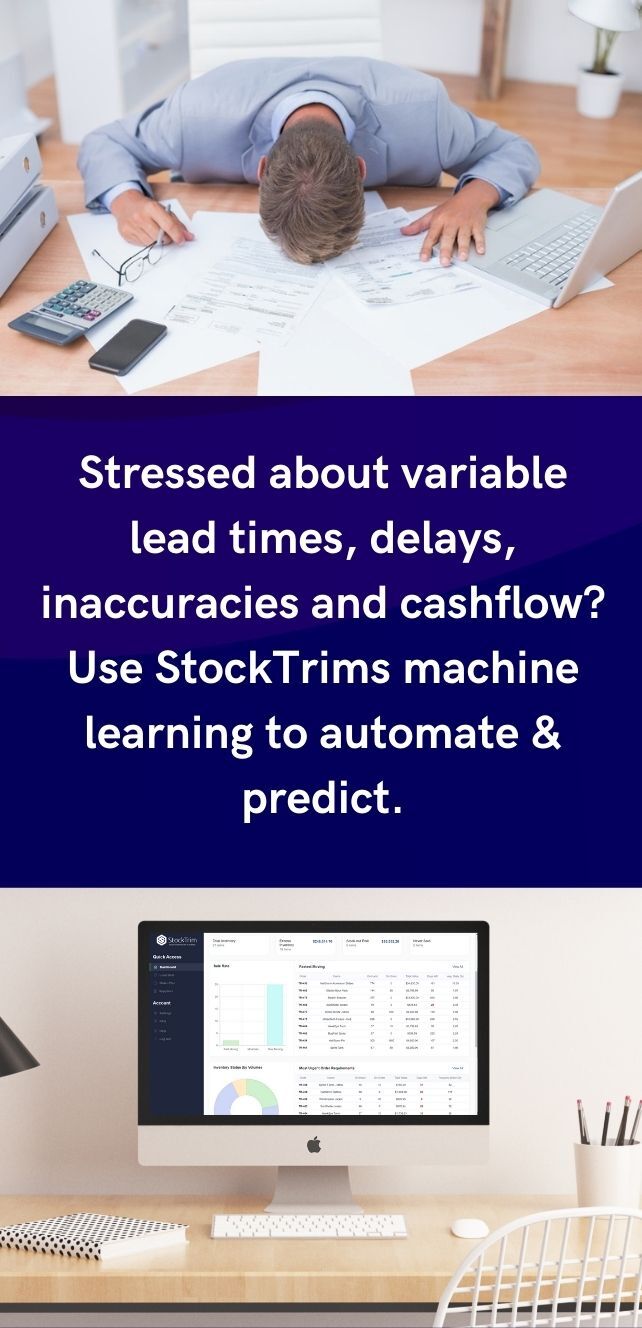May 16,2025
If you’ve ever endured the chaos of being out of stock—or worse, inventory sitting on shelves that won’t sell—you know you're among friends. Inventory mismanagement is a stealthy profit killer, particularly for small and medium-sized businesses. It doesn’t matter if you're a manufacturer, retailer, or an ecommerce company, the problem is real: demand forecasting is difficult, but getting it wrong is costly.
But most companies are still using antiquated spreadsheets, intuition, or clunky old systems to plan stock. There has to be a better way—smarter, leaner, and designed for the way businesses operate today.

The Accounting Balancing Act
Inventory is an expense until it turns into revenue. Having too much, however, means cash tied up in inventory that may never sell. Having too little? Missed sales, dissatisfied customers, and damage to your reputation.
Most businesses don't have a shortage of data—they have a shortage of insight. Seasonality, supplier lead times, new product launches, and historical sales are all factored into how much inventory you ought to carry. The trick is integrating all of those factors into something actionable.
Inventory is an expense until it turns into revenue. Having too much, however, means cash tied up in inventory that may never sell. Having too little? Missed sales, dissatisfied customers, and damage to your reputation.
Most businesses don't have a shortage of data—they have a shortage of insight. Seasonality, supplier lead times, new product launches, and historical sales are all factored into how much inventory you ought to carry. The trick is integrating all of those factors into something actionable.
Where it Plays a Role: What Smarter Forecasting Looks Like
Smarter forecasting is not about abandoning your team's experience. It is about equipping them with data and analytical logic coupled with their insight.
A contemporary inventory prediction system:
Smarter forecasting is not about abandoning your team's experience. It is about equipping them with data and analytical logic coupled with their insight.
A contemporary inventory prediction system:
- Examines your true selling trends (and not your averages alone)
- Considers seasonality, growth patterns, and supplier lead times
- Automatically adjusts when circumstances change—such as product lifecycles or changes in demand
- Assists you in responding: “How much should I order, and when?”

Real-Life Example: How One Small Manufacturer Was Transformed
One StockTrim user, a maker of environmentally friendly home products, used to buy stock in large quantities every quarter under the rationale, "It's the way we've always done it." It resulted occasionally in excess inventory for certain SKUs and stockouts for others.
They changed over to demand-based forecasting and began to order smarter—ordering more often, but more accurately. During the first 6 months:
One StockTrim user, a maker of environmentally friendly home products, used to buy stock in large quantities every quarter under the rationale, "It's the way we've always done it." It resulted occasionally in excess inventory for certain SKUs and stockouts for others.
They changed over to demand-based forecasting and began to order smarter—ordering more often, but more accurately. During the first 6 months:
- Stockouts fell by 30%
- Inventory holding costs declined by 22%
- They saved 8–10 hours every week on planning
The program didn’t supplant their judgment—it amplified it.

It's No Longer Only for Large Corporations
You don’t have to have an enterprise budget or a full-time supply chain analyst to make this work. Small and medium-sized businesses have cloud-based, purpose-built forecasting solutions like StockTrim. They integrate into your systems, crunch the numbers for you, and provide you with real-time inventory recommendations based on your historical sales.
You have:
You don’t have to have an enterprise budget or a full-time supply chain analyst to make this work. Small and medium-sized businesses have cloud-based, purpose-built forecasting solutions like StockTrim. They integrate into your systems, crunch the numbers for you, and provide you with real-time inventory recommendations based on your historical sales.
You have:
- Forecasts by SKU
- Suggested order quantities and dates
- Visual dashboards that make sense
No more best guesses. No more emergency orders.
How to Get Started
If you still rely on spreadsheets and supplier lead-time guesstimates, begin small:
If you still rely on spreadsheets and supplier lead-time guesstimates, begin small:
- Select your top 20 percent SKUs (the ones which contribute to most of your revenue)
- Observe their selling trends and supplier timelines
- Use a demand forecast model to estimate demand
You'll be surprised by the clarity that you can get by viewing your inventory through the eyes of real demand.
Trial StockTrim today for 14 days FREE, with no credit card required.


